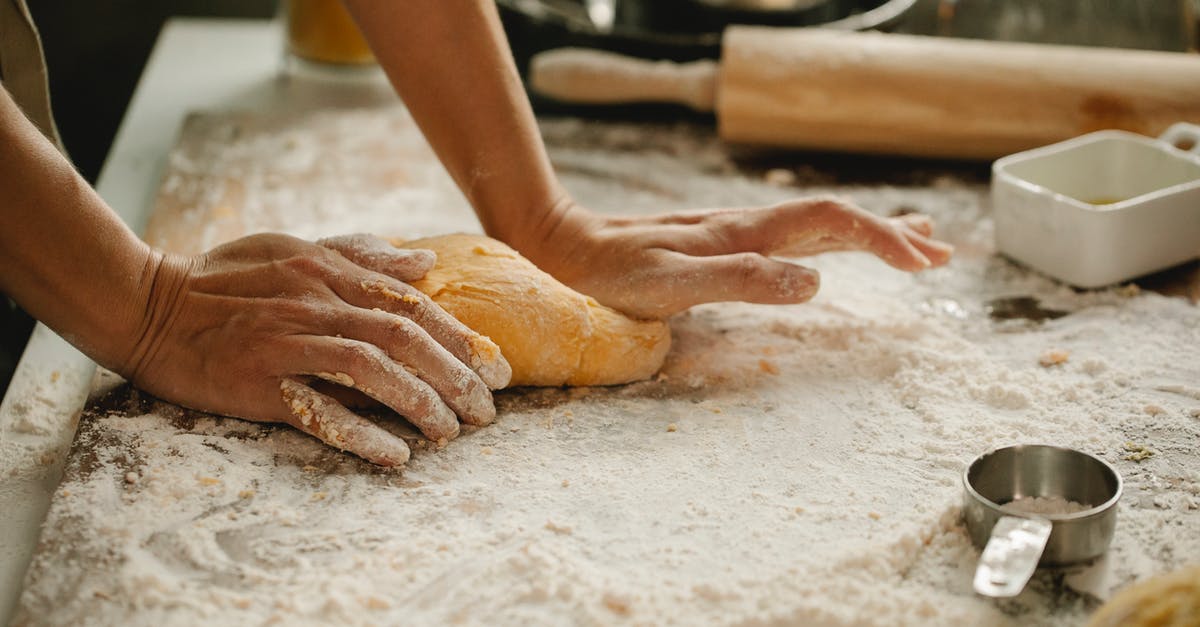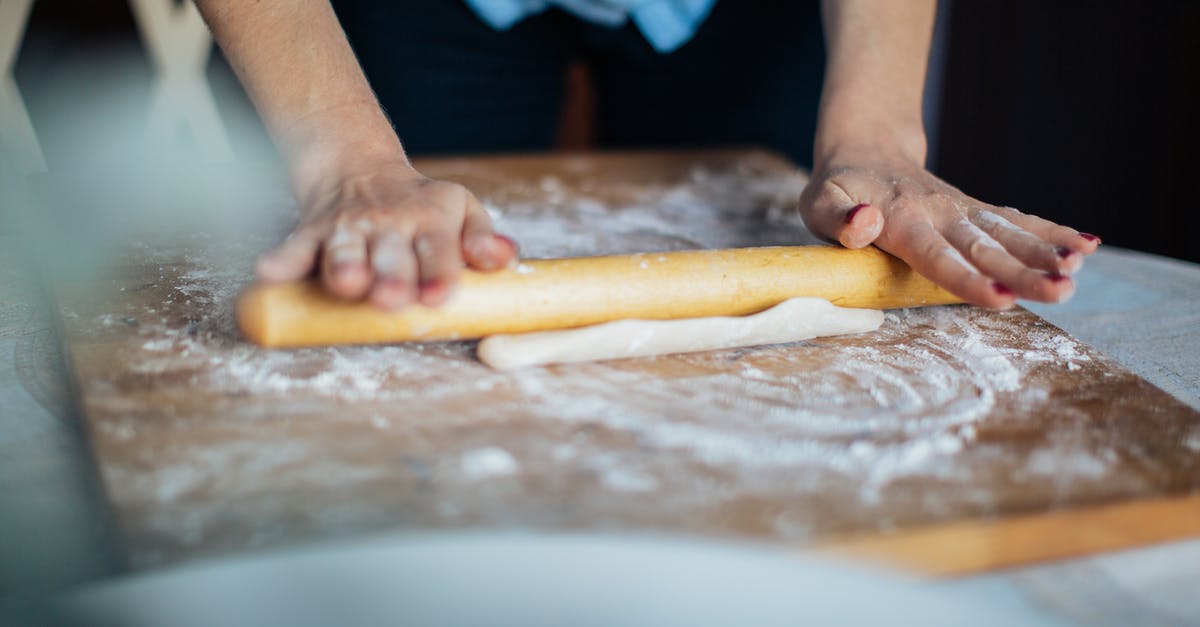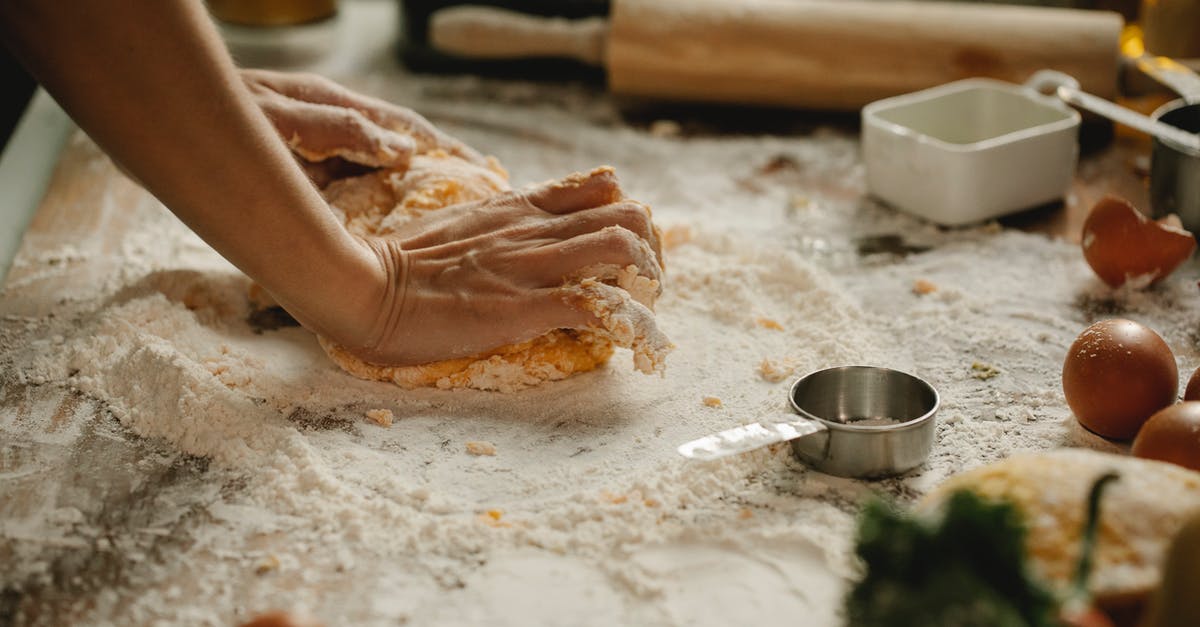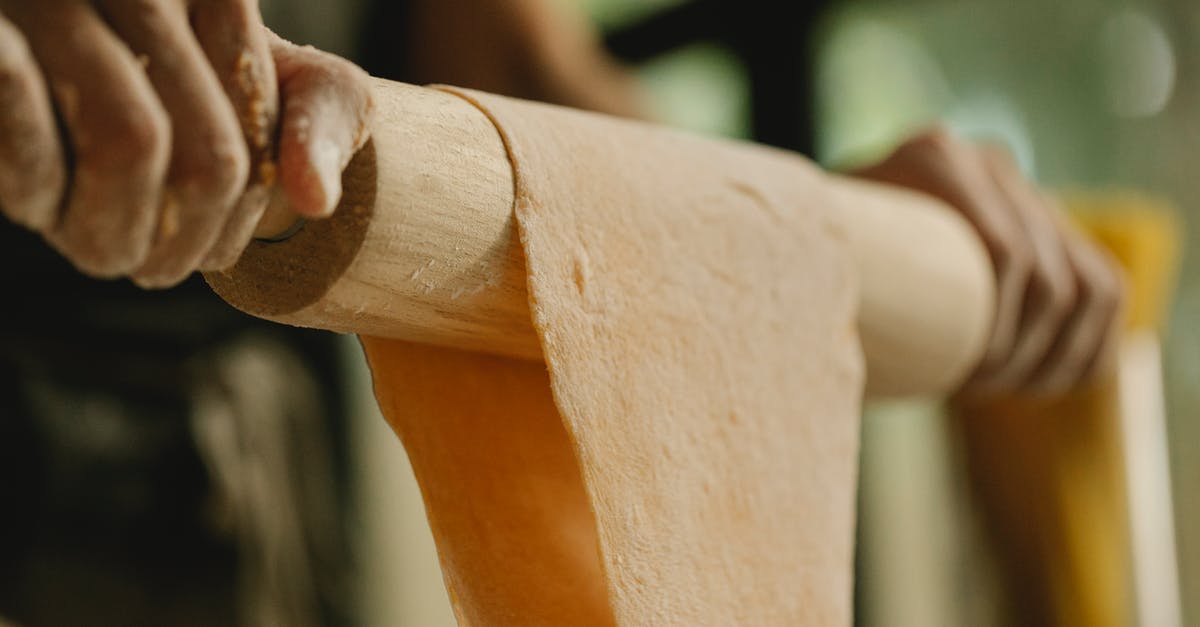Can dough be knead with a rolling pin?

Can dough be kneaded with a rolling pin instead of by hand?
If not, what are the mechanic differences that make it so? How is the process of repeatedly flattening and stretching the dough different when done by hand or with a rolling pin?
I have found recommendations that kneading should not be done with a rolling pin, there is never a justification of why. Upon simple inspection, what is done to the dough seems similar enough in both cases.
Best Answer
You didn't say what kind of dough you are thinking about, so I'll try to give a bit of an overview first:
With most doughs, the way you handle it will influence the development of gluten. Roughly stated: more handling/stretching equals more/longer strands and more density.
- Type 1: Pie crust, shortbread, bisquits etc.
You want to avoid excessive development of gluten as it would make the result tough instead of light and flaky. So we aim for as little handling as possible, "cut" or "rub" the fat into the flour and add liquids at the end with only a quick stir.
Use of a rolling pin would counteract this approach, so no use here. Some people will even avoid re-rolling this type of dough whenever possible. - Type 2: Bread etc.
Here, the gluten strands will trap the co2 developed by the yeast, thus enabling the bread to rise. The type of strands can be influenced by the method of kneading. If you go "round and round", either in a mixer or by hand, you'll get lots of small bubbles, giving your bread a uniform texture inside. If you do a "stretch and fold" (usually repeated a few times during the first rise) you get longer, aligned strands and large bubbles. With each method, the dough will be way to sticky to use a rolling pin, at least at the beginning. Most doughs will become less sticky when the gluten strands have started to form. (My great-aunt always said "it's ready when it cleans the bowl and your hands".) That's the point where the rolling pin could be used theoretically. Usually that's after the first rise, when you knead gently again, then shape. I'd strongly advise against the use of a rolling pin here because a few things are likely to happen: a) you might "burst" too many co2 bubbles, b) you are likely to work too much extra flour into the dough, because your hands "feel" when it starts to stick, the pin doesn't, c) you actually aren't supposed "flatten" the dough, rather gently stretch it somewhat, then fold over to the middle and just press to make it stick onto itself again (to quote my great-aunt again: "Handle it roughly first, gently later."). And you will use your hands anyway to move the dough, so why clean the pin, too? - Type 3: Pasta dough
This is actually one type of dough where the use of a rolling pin might be an option. Based on flour and very little liquid, pasta dough needs to be kneaded rather firmly and longer, because the development of gluten strands is somewhat inhibited due to the "dryness" of the dough. The pin could give you the leverage your hands don't. Some people roll the dough a few times through the pasta machine on the wide setting before shaping it, too.
Pictures about "Can dough be knead with a rolling pin?"



Quick Answer about "Can dough be knead with a rolling pin?"
Yes, you can knead it with a rolling pin if you want to. You'll have to repeatedly roll it into a flat shape, fold it once or a few times into a thicker shape, than roll again.Can you use a rolling pin to make bread?
As it turns out, a rolling pin does more than only, roll. They are usually used for rolling out dough for pastries, such as pies and cookies, but can also be used for rolling out bread dough for items like pizza, cinnamon rolls, and pasta.Does dough stick to wood rolling pin?
Many wooden rolling pins stick to the dough. This can be a real hassle, especially if adding a lot of flour makes the pastry over-floured. However, some woods are better than others; look for an oilier wood that will not stick as much. A wooden roll cannot be chilled for pastry that needs to stay really cool.How to Knead Dough
More answers regarding can dough be knead with a rolling pin?
Answer 2
Edit: I assumed bread dough here, during initial kneading. Seeing Stephie's answer made me remember that "kneading" applies to many more contexts. But please keep my assumption in mind when reading the answer here.
Yes, you can knead it with a rolling pin if you want to. You'll have to repeatedly roll it into a flat shape, fold it once or a few times into a thicker shape, than roll again. This is similar to a stretch-and-fold hand kneading method, and will produce a very well aligned gluten structure with distinct gluten "layers".
But in practice, you will run into a few problems. First, some of the most interesting types of bread, where you worry the most about kneading quality, are made with a very high hydration dough, 80% and above. This dough will stick to a rolling pin terribly. You don't want to add flour until it stops sticking (this will ruin the dough), so you'll spend more time scraping dough off the rolling pin than kneading.
Second, the rolling pin is unwieldy. With a bit of exercise, it is easy to develop the correct kneading movements for kneading by hand and execute them efficiently. A rolling pin will slow a good kneader down. It will also prevent you from feeling the dough, making it harder to judge how much to knead.
Bottom line: Experienced bakers find their hands to be the most convenient instrument. If you for some reason find the rolling pin more convenient, use it.
See also Why stretch and fold vs traditional kneading of bread dough? and Does the direction matter in the Stretch and Fold method? for more info on what you are trying to emulate with the rolling pin.
Sources: Stack Exchange - This article follows the attribution requirements of Stack Exchange and is licensed under CC BY-SA 3.0.
Images: Klaus Nielsen, Elina Fairytale, Klaus Nielsen, Klaus Nielsen
